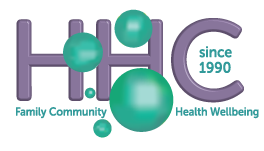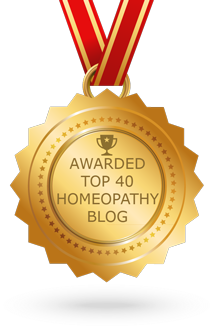First off, let’s look at the history of wound care
- 2200BC, a clay tablet described washing wounds and making a plaster as a dressing.
- Many types of wounds and care of all kinds have been found in recorded history: Arsenic, silver, bile, bark, blood, tar, lard, beer, honey, turmeric, myrrh, mashed banana, green tea, calendula, aloe vera, marshmallow, tea-tree leaves and urinating on the wound. Different civilisations made use of what they had and the plants growing nearby.
- 1940’s, antibiotics were introduced as the modern solution
- 2013 due to microbial resistance there is increasing research about wound care that doesn’t rely on antibiotics – “Antimicrobial resistance is a ticking time bomb” says UK Chief Medical Officer.“
The good and bad of antiseptics
| Advantages | Disadvantages | Comments | |
|---|---|---|---|
| Clean water | Use copiously to remove dirt. Large, minor wounds can be cleaned in the shower. | No known disadvantages | You don’t need antiseptics to clean a simple cut or scrape. |
| Chlorhexidine 0.05% | Broad spectrum effective against most bacteria. | It’s antiseptic effect is inactivated by soap, saline, iodine, blood and body fluids. Ineffective against fungi and viruses. | Is it worth it to use it? There may be better options. |
| Povidone Iodine - Betadine | Broad spectrum effective against bacteria, fungi, viruses and protozoa. | May delay wound healing. Inactivated by body fluids. Risk of an allergic reaction. On large areas people will absorb a dose of iodine, they may or may not need it. | Is it worth it to use it? There may be better options. |
| Hydrogen peroxide | Will start a bubbling action which helps remove debris. | May delay wound healing. Can destroy healthy cells and therefore affect wound healing. | Not recommended on a long-term basis. It cleans the wound and kills bacteria initially, but delays wound healing |
| Calendula | Anti-inflammatory, anti fungal and antibacterial. Stimulates cell healing: angiogenesis and fibroblast activity. | No known disadvantages | No serious adverse events have been associated with calendula. Promotes wound healing. |
What does research say about cleaning wounds?
- Many antiseptics act like a broad-spectrum antibiotic. Their widespread use has prompted speculation on whether they too induce antibiotic resistance.
- Routinely cleaning a wound every time you change the dressing can do more harm than good, as disturbing the freshly granulating wound may disrupt fragile tissue growth. The body may perceive this as a new injury and re-launch an inflammatory response, delaying the healing process.
- Make sure to use warm water when cleaning during wound care. After cleaning with a cold solution, a wound can take up to 40 minutes to reach the optimum temperature for healing again.
- Potable tap water is as safe and effective as normal saline for wound cleansing, although saline should be used on post operative wounds.
- If wounds take too long to heal, consider if there is adequate protein, iron, zinc and good fats in the diet.
- Calendula ointment considerably increases the speed of cesarean wound healing. Researchers have paid attention to it because it is cheap, effective, accessible and acceptable by women after birth who are on the lookout for natural options.
- The antimicrobial action of manuka honey has been demonstrated to work in research, against a wide range of problematic bacteria such as Staphylococcus aureus and Pseudomonas aeruginosa.
- Silver nanoparticles are incorporated into bandages due to their broad-spectrum antimicrobial activity. However, there is a problem in that silver has the potential to actually impair healing by exerting its effects on keratinocytes and fibroblasts which are necessary for wound healing. So, if wounds are infected, silver bandages are beneficial for the first few days, after that non-silver dressings should be used instead. For clean wounds and closed surgical incisions, silver really doesn’t give a benefit and may irritate and slow the healing of those wounds.
- In research on chronic wounds, a paste was made from 100 gm of honey mixed with 10 gms of good quality turmeric powder and applied to a gauze pad and the wound was covered. Direct application of the paste to the wound was avoided. There were no adverse effects, it was much cheaper than silver dressings and had faster wound healing. “It is like a poor people’s antiseptic ointment”.
What is biofilm?
Manuka honey
- Anti-inflammatory and antimicrobial.
- Controls malodour.
- Helps maintain wound hydration.
- Has claimed a place on the modern list of accepted traditional medicines.
- Eradicates and prevents the formation of biofilm. Bacteria are unable to develop resistance to honey, even under conditions that rapidly induce resistance to common antibiotics.
- Don’t apply straight from the jar, the drawing effect might be painful, it’s called osmotic debridement.
- Ideally, a person should use medical-grade honey because there are theoretical risks of infection using raw honey, although these risks are likely overstated.
- The frequency of dressing changes, will depend on how rapidly the honey is diluted by the wound fluid and may require daily changes in the initial stages of wound healing. As exudate levels decrease, fewer dressing changes are required and they can be left in situ for up to 3-7 days.
Tea tree oil
- Research shows that tea tree oil is good in managing dermatitis, acne and tinea.
- Laboratory studies have demonstrated tea tree oil’s activity against bacteria, fungi and herpes simplex virus.
- Commercial preparations of tea tree oil including sprays, solutions and impregnated dressings.
- More traditional use of tea tree oil includes using it as a wash (two drops of pure essential oil diluted in 250 ml of warm water.
Turmeric/ curcumin
- Anti-inflammatory, antioxidant and antimicrobial.
- Local inflammation is reported as a minor side effect from application of turmeric to skin.
- The benefits of turmeric powder are long known in India with direct application of a paste prepared from turmeric root, mustard oil and water.
- Turmeric stains can be remarkably persistent, the natural pigment can stain your skin a yellowish colour.
- Turmeric paste has the ability to enhance granulation tissue formation, collagen deposition, tissue remodeling and wound contraction.
- To write this blog I did an informal survey and asked 35 Australian natural therapy practitioners if they had used turmeric paste for wound care. Only three said yes. One of them had tried it once and said “It’s very yellow and gets everywhere.” One said “It really seems to help with scarring.” The other was homeopath, Dimple Kirpalani who had grown up in India and she said “When I was a child, it was known to stop a wound bleeding or oozing. It’s used for open wounds but without milk – just the dry powder. It stains! But you couldn’t say no to grandma. If the quality of the turmeric is good, the pain relief is astounding especially for sprains and strains.” Perhaps it is an underused option in Australia with little knowledge here about how to actually use it effectively.
- When people say “use a good quality turmeric for wound healing paste” they say this for good reason.
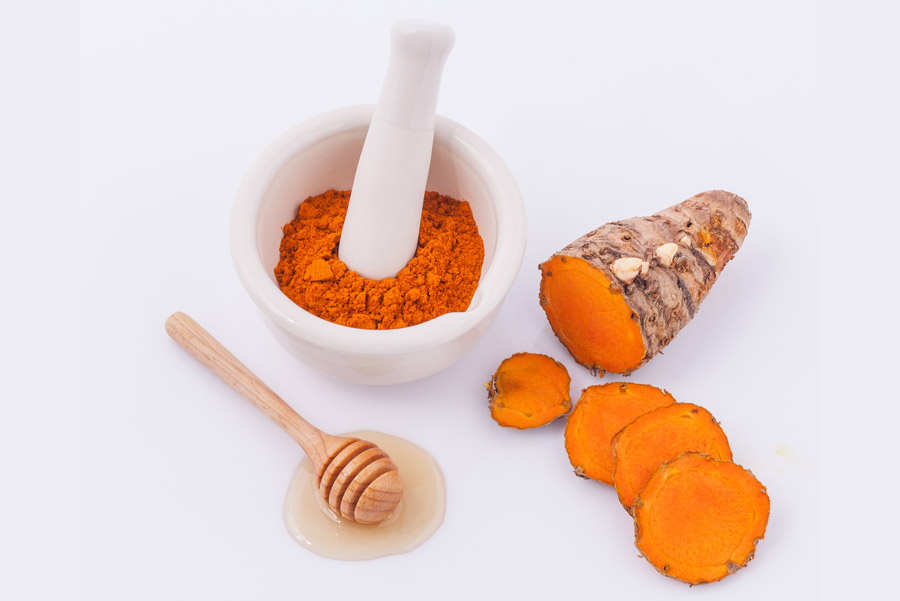
How to make turmeric paste
- Mix 1-2 teaspoons of ground turmeric (depending on how large the wound is) with enough mustard oil or coconut oil to make a paste consistency (generally about half the amount of turmeric you use). If you make turmeric paste with water it will dry out too soon. Put in a pot on the stove. Reduce on medium-low heat while stirring until it begins to form a thick paste then let cool a little. It should be pasty, so don’t expect it to look like a cream.
- Be sure to wash your hands before applying it.
- Always patch test before using it.
- Apply the warm paste gently on the area, it can be put on an open wound and may sting. (Some people such as Dimple Kirpalani remember from her childhood that her grandmother would apply turmeric powder on an open wound.)
- Place your bandage of choice over the wound and tape around the edges, leave overnight.
- Should be a bit waterproof because of the oil.
- Let it sit for at least 12 hours, or up to 24 hours. Wash off the next day, repeat.
- Do this for three days.
How do you make turmeric paste to use for swelling, such as painful knees or a sprained ankle?
Sapnaa Palmer from Harbord Homeopathic Clinic knows a lot about using turmeric paste not just from her training as a Doctor/Homeopath in India but also from the fact that she grew up with a family whose first port of call for painful knees and sprained ankles would be turmeric paste. First hand experience.
She said “We still personally use it for sprains and pains/inflammation of joints and it does help! First of all you will need 2 tablespoons of turmeric powder. This depends on how large the swollen area is. Also, you need 1 tablespoon of mustard oil or coconut oil to make a paste consistency. Don’t use water. Generally the oil should be about half the amount of turmeric you use. Then heat the oil and add 2-3 whole cloves of garlic to it and cook on medium-low heat until garlic is nicely cooked (black or brown in colour). Remove the garlic cloves and in the same hot oil add turmeric in desired quantities to make a paste and apply it warm on the affected area. Cover the ankle with cling wrap and tape the edges.”
Homeopathy for wounds, accidents and injuries
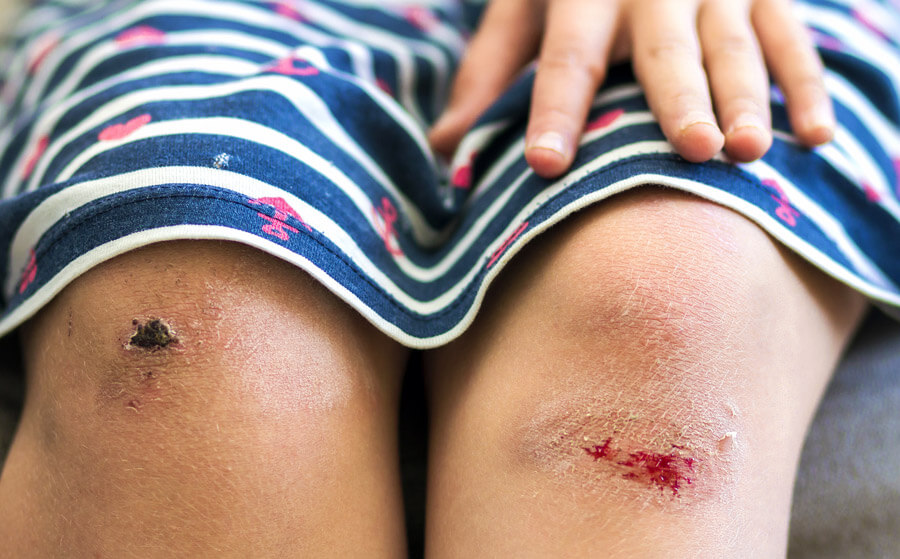
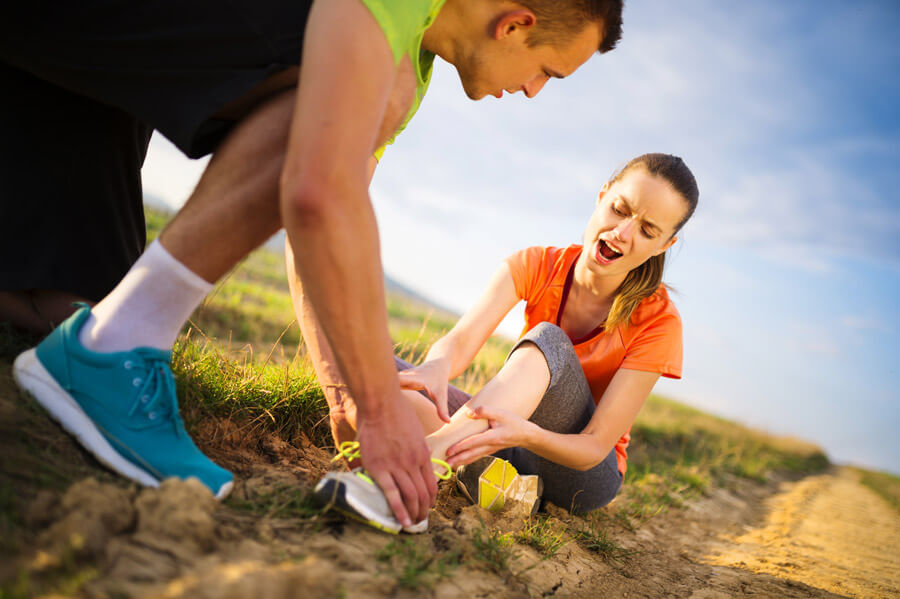
Possible signs of an infected wound
- Aches and pains or the area around the wound is warm.
- Yellow or green discharge.
- Emits an unpleasant odour.
- Red streaks appear on the skin around it.
- Fever / chills, nausea or vomiting.
Some wounds need more than home care
- Any infected wound or debris that you can’t remove.
- Large or jagged edges and will not stay closed (may require stitches).
- Resulted from a bite or an injury with a dirty or rusty object.
- Keeps bleeding, even after applying pressure.
- Helpful hint #3 you can use Arnica in the car on the way to medical help.
Last points about looking after cuts, scrapes and injuries
- Everyday we hear more about how micro-organisms can adapt, so it’s not surprising that resistance to extensively used antiseptics and disinfectants as well as antibiotics has been reported. When you can, just use plain water to wash a wound and use the most natural methods you have available to look after it.
- Just because something has gained a reputation in natural healing circles doesn’t mean it can be used without careful thought. For example, colloidal silver is popular but it delays wound healing.
- It’s not unusual for the effects of injuries/ sprains to linger on, never quite resolving. Then it’s too easy to re-injure yourself. By having a kit of first aid remedies and studying up how to use homeopathy for wounds, you can head off a lot of pain and suffering and stop acute injuries from becoming chronic problems.
- If you are prone to allergic reactions don’t forget to always do a test patch first of any ointment or paste. For example, be careful using Manuka honey for people who have bee sting allergies.
- Filling in the Gaps: A Homeopath’s Tour of a Dental Technician Lab - 08/11/2024
- Homeopathy surge worldwide - 11/08/2024
- Autism is helped by several different styles of homeopathy - 07/05/2024
